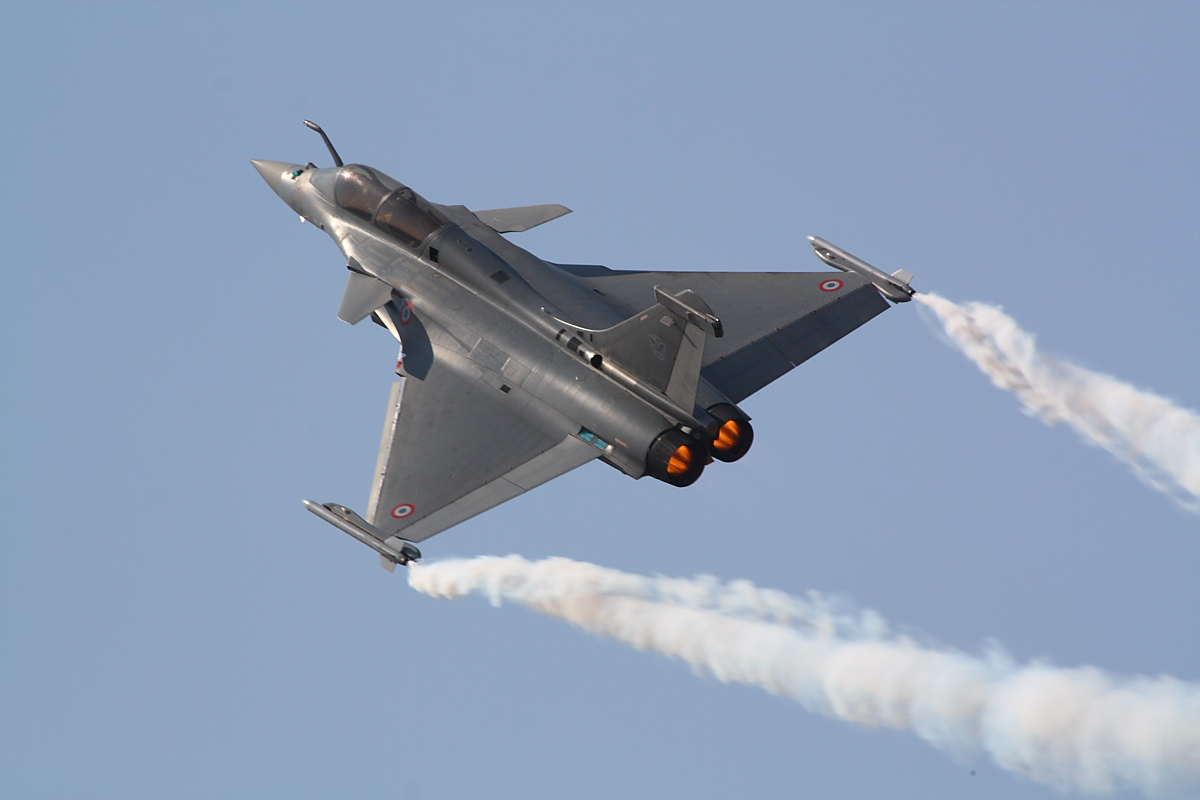
In the intense competition for India’s substantial Medium Multi-Role Fighter Aircraft (MRFA) procurement, Airbus is aligning itself with the latest iteration of the Eurofighter Typhoon, the Tranche 5 variant. This strategic move positions Airbus to vie for a share of the 114 jets India seeks to acquire.
Distinguished by its cutting-edge E-Scan active electronically scanned array (AESA) radar, the Block 5 Eurofighter offers unparalleled situational awareness and target-tracking capabilities critical for modern aerial combat. Augmented by advanced defensive measures and a human-machine interface (HMI) aimed at optimizing pilot effectiveness, the Eurofighter stands out among its rivals.
Yet, Airbus remains proactive in its pursuit of excellence. The Tranche 5 model integrates components from the ongoing Long Term Evolution (LTE) package, focused on advancing mission systems, pilot interfaces, operational flexibility, and engine performance.
The Eurofighter’s avionics are undergoing a significant overhaul, incorporating state-of-the-art hardware and software to maintain its status as a premier combat aircraft. These advancements not only enhance the Eurofighter’s capabilities but also contribute to Europe’s Future Combat Air System (FCAS), where the Eurofighter is expected to play a pivotal role.
Beyond its technological prowess, the proposed Indian variant of the Eurofighter will be equipped with a formidable array of air-to-air missiles, including AMRAAM, ASRAAM, IRIS-T, and AIM-9L, alongside the capability to carry various laser-guided bombs, ensuring adaptability across diverse battlefield scenarios.
Furthermore, the Eurofighter’s capabilities extend to long-range missions, with certified external fuel tanks for supersonic flights and air-to-air refueling compatibility with multiple tanker types, ensuring extended operational range and mission endurance.
The Rafale maintains its cost advantage over the Eurofighter, despite the latter’s advanced features, forward-looking design, and battle-proven armament. While the Eurofighter lost out to the Rafale in the previous MRCA tender primarily on price, its technical prowess remains undisputed. This cost disparity between the two aircraft stems from differences in design philosophies and production strategies adopted by their respective manufacturers.
The Eurofighter Typhoon’s collaborative multinational development involving companies from the UK, Germany, Italy, and Spain, while advantageous in certain aspects, often leads to increased costs due to the complexities associated with coordinating production across diverse industrial policies and practices. Furthermore, the Typhoon’s emphasis on air superiority necessitated the integration of high-end, albeit more costly, technologies.
Recent attention has been drawn to the Eurofighter Economic Impact Assessment report, conducted by Strategy&, a branch of PricewaterhouseCoopers (PwC). This report outlines a “growth scenario” projecting potential sales of up to 287 new aircraft, including contracted but undelivered planes. Released by the Eurofighter consortium, the report envisions the sale of additional versatile combat aircraft to both exporting nations and consortium partners.
The report emphasizes the critical need for additional domestic and export contracts to sustain production rates across final assembly facilities located in Germany, Italy, Spain, and the UK. PwC estimates that, apart from the already planned Quadriga and Halcon I/II purchases for Germany and Spain, respectively, additional sales from partner and export nations will be necessary.
As competition for India’s MRFA contract intensifies, Airbus remains resolute in positioning the Eurofighter as a formidable contender in modern aerial warfare.





